HIStalk Interviews Sanjaya Kumar
Sanjaya Kumar, MD, MPH is president, CEO, and CMO of Quantros.

Can you give me a two-minute summary of hospital-based pay-for-performance programs and how your applications help manage them?
It’s interesting that you say hospital-based pay-for-performance programs because I think the overall industry graduated into pay-for-performance, from the managed care all the way down to the physicians really having to basically be working within those programs. Now, definitely the hospitals are in the fringes of that, but I think, firmly, in my opinion, pay-for-performance now is moving into pay-for-results and pay-for-better-outcomes.
The way that our applications help support those needs for the hospitals that are participating in those programs is that we allow ready capture and aggregation of all of that data, either from secondary data sources, or they can actually input it into the applications for the different metrics that are supposed to be reported for the pay-for-performance programs from either CMS or Joint Commission. Primarily CMS. That data is reported quarterly.
The added benefit for our clients is that they can review all of that data in near real time, as well as compare and benchmark themselves with other hospitals in a blinded fashion, very readily. That’s one of the added values that we provide, so even before they’re able to see their results publicly reported out there for pay-for-performance, they can gauge and see how well they’re doing in comparison with others.
What impact do you think the publicly reported hospital quality and outcomes measures will have on the industry?
In the way that the information currently is made available, I think the impact is relatively slow in terms of its uptake. However, what it is a doing is that it’s increasing the degree of transparency around the reporting of all of these metrics and measures and education to the consumer of healthcare, in terms of their importance and their significance. Really, the metrics aside, I think the overall programs are helping to influence consumers in the way that they seek care, or where they seek care from.
I think it’s going to continue to shape that industry in terms of the transparency that needs to be there. It’s going to drive and motivate more and more hospitals to actually disclose some of all of the results to their local constituents and local marketplaces in order to influence purchasing behavior of either employer groups or health plans, in terms of how they’re contracting with them or in terms of where the consumers are seeking care from.
I think it will have a bigger influence, perhaps five years down the line, as this data begins to get even much more attention and begins to get publicized that much more. Today, the healthcare consumer is still very naïve about some or all of this.
Do you think they know the data’s out there and just don’t have much of a choice of where they go? Or, do you think they’re really unaware that there even is such a thing?
To a large extent, I think the awareness is coming about, but I think it’s slow on the uptake and slow on the marketing of some of all this information. The government could do, perhaps, more, in terms of highlighting the availability and where the data is made available from. More has to be done. I think more people need to get onto the bandwagon, in terms of shaping consumer attention to this.
Several years ago, the MedMARx database was used to generate a report suggesting that CPOE was creating quite a few medication-related errors. What are you seeing now from the database and with the FDA’s apparent interest in overseeing the whole safety issue with electronic health records, how do you see that playing out?
As you perhaps, know from the background, we actually acquired the MedMARx database about two years ago from the USP. We now currently manage that data registry. It’s got over 2 million records on medication errors and adverse drug reactions.
The same patterns that actually used to be there are still pretty much very evident. Meaning, although one of the patterns that has actually emerging and interestingly, we did an analysis for somebody that was actually writing an article in The Wall Street Journal a few months ago that indicated that errors that basically are implicating CPOE systems definitely do occur, but the more serious type of events are being averted.
I’m meaning that more incidents that actually lead to major fatal harm are actually on the decline with the utilization of CPOE. Although, CPOE is still leading to a number of errors that are basically there within the medication error profiles.
I think that a real interesting conundrum over here is that there are multiple vendors for CPOE systems. I think CPOE systems need to be very carefully evaluated. I know that the Leapfrog Group, for example, has a CPOE evaluation tool that is made available to hospitals. For example, if they’re participating in the Leapfrog survey. I don’t know how much you know about the Leapfrog Group, but they’re all about transparency for safety and quality, in terms of practices that are out there and how safe institutions are. They actually make available a CPOE evaluation tool.
I think the FDA needs to look at tools like that very, very collaboratively, in terms of really encouraging the use of those tools to identify CPOE solutions that are right, that are fit, that are actually ready for use within point-of-care environment. There are a lot of CPOE systems out there that are not necessarily right that actually are leading to a lot of errors, or that are not catching errors, necessarily.
When we implement systems like CPOE, we automatically are almost aligned with clinicians just like a child with a calculator who doesn’t necessarily think through the computation they’re performing, but just believes in the answer that they are getting. That is the biggest problem with automation systems. We’re actually blinding the provider at the point of care with systems like that in order to believe them without having to really think through whether something is right or wrong.
I think utilization of CPOE evaluation type methodologies; critical review of those, the kind of errors that they lead into is very, very important as a go-forward strategy; especially if we are mandating that solutions like this be implemented, which is really pretty much what the ARRA, the HITECH Act, is providing for.
EHR adoption is going to create tons of electronic patient data from all these systems at some point. What do you think the best use is, both at the organizational level, and the population level, for all of that data that we’ll suddenly have available?
I think it will be a blessing for monitoring specific populations of interest. It will be of benefit to actually apply continuous quality improvement methodologies in place. It will be very, very important for organizations to actually utilize some or all of that digitized data to be able to tell more — regarding their own environment, regarding where care is actually being provided, how well care is being provided — from a combination of dimensions of interest: patient safety; quality; compliance with clinical care protocols; and adherence to certain standards of care from the perspective of providers, in terms of their outcomes that are actually occurring; and finances.
I mean, we shouldn’t forget that care should be really provided in a very cost-effective fashion. Today, it’s very, very difficult, for example, for an institution that is actually collecting all of the quality data, to actually even determine what the improved quality-to-cost ratio is. If they’re collecting all of this data to monitor and improve upon care for heart attack patients, if that is actually influencing a decrease in cost or length of stay for the institution, it’s very difficult for them to do that very readily today with the availability of data across all of these different dimensions. For the population-based level, it will become easier and easier to allow for such evaluation to occur.
I know that you have some products that relate to real-time surveillance. What are the results? What are hospitals doing with that?
Real-time surveillance, again, is applicable to only institutions that have good, digitized HL7-formatted data that is regularly available. Naturally, of course, that precludes the utilization of those tools today to perhaps less than 10% of the institutions within the United States. Those kinds of solutions really are easy to use, very readily configurable solutions that allow a clinician to set up rule sets — different rules that are very, very clinically sound, in terms of really what they’re looking for.
For example, a drug-bug mismatch. Based upon the data feed that is coming in from the lab, if a particular microbiology result basically indicated that a patient had a particular bug and was sensitive to a particular medication, it’s now going to look into the pharmacy order entry data set coming into the system to determine whether the right drug was actually being ordered for the patient. If the right drug is not being ordered for the patient, it will raise an alert. It will raise a flag. That flag is brought to the attention of the care provider.
Today, EMR systems do not have that degree of robust decision support rule sets built into them because it’s extremely customized and cumbersome to manage and maintain. The surveillance solutions that we provide take the HL7 data feeds and the clinician configures whatever rule sets that they want and have the alerts go out to the people that really need to be taking care of the patient.
I had one question about one of your products, your Clinical Café. Can you tell me about that?
That’s sort of like a pet project of mine that got conceptualized about three years ago at one of the IHI conferences. Really, the premise behind ClinicalCafe.com was to provide an environment … because Quantros services over 2,000 hospitals, we have a very rich collection of very like-minded people around quality, safety, compliance, operations, CMOs, and the like, that are basically part of the user community.
The idea was — how do we bring all of these people together in an environment where it can provide for them to connect with each other, be able to share best practices or information with each other so that they can collectively learn? Because what is working in one organization will probably benefit another organization. How can they be able to inform each other proactively, by setting up, maybe peer groups and things like that, so that they can collaborate? It’s sort of like creating an environment for utilizing social networking to really provide for a very rich collaboration for learning purposes and improvements in safety and quality. That was really the premise of Clinical Café.
It took about two years to actually gel the idea together. We launched ClincalCafe.com at the last IHI conference in December, the last one that was actually held, in 2009. We launched it over there and now we are integrating it with our applications to invite each and every user into the Clinical Café environment so that they can begin to interact with each other. It’s an open, shared, learning platform. It’s really not a proprietary platform. It’s really for any clinician, any provider, anybody interested in safety and quality, to be able to learn from each other as opposed to, perhaps, going to disparate sort of places.
Normally, learning is amongst each other. We tend to learn from each other much more readily. We share a lot of information with each other. Hopefully, the environment will provide for that. I would encourage you to sign up and become a member.
Anybody can become a member?
Anybody can become a member. The way that I like to introduce it is sort of like a Facebook for professionals within the healthcare community that are interested in improving safety and quality. I think, as of the last count, we had about 1,500 people that had already joined. It keeps on increasing by about 30-40 people every day. Hopefully, we’ll have a critical mass very soon.
This may be a question that you’re not comfortable with answering, but I’ll ask. If a hospital, from your perspective, wanted to make IT investments right now, with patient safety in mind, based on what you know and what you’ve seen and what your data tells you, what kind of technologies do you think would make the most sense?
There are lots of technologies that people are proposing out there for the point-of-care environment that I don’t think are necessarily ready. I think there needs to be a lot more critical evaluation done, in terms of the technologies that are being proposed out there. Very, very few vendors out there have ready technologies that would allow for very effective solutions at the level of point-of-care. A lot of the EMR systems out there are documentation systems. They’re not necessarily aligned for collection of very good, discrete data elements that can be utilized in a very meaningful fashion. We have to still evolve.
We should be very careful because some of these purchases are going to cost millions of dollars and they’re not necessarily that easy to replace because you’re going to embed them within the fabric of your enterprise. A number of people will have to work with them.
The other issue with a lot of point-of-care systems is clinicians are very, very averse to any new technology or change management. I think adoption of these technologies, ready usability if you have some of all of these technologies, is very, very important. I’ll highlight one key important point. For example, if I’m a physician and I’m practicing at three different institutions, and all of those three different institutions are using three different EMR or EHR systems, I now have to learn three different systems to interact with and actual work with. How can that EMR system just basically take my credentials and, perhaps make that into a common user interface for me that is to my liking?
I think technologies like that have to basically be researched, and I think we’re still at the very nascent stages of that evolution.
Over the next five years, what are your plans for the company?
The plan for our company is to continue to confirm our position as an industry leader, in terms of what we provide for furthering patient safety and quality and transparency for some of all of the data that we help our institutions collect and report. Our focus is squarely in terms of how do we bring about more actionable information for key stakeholders within institutions to be able to address patient safety, quality, and their business? The outcomes for improvements related to the implementation of EHRs or EMRs is basically safety and quality. That’s pretty much what everybody is proposing out there.
Our focus is squarely on that, and as a company, we are hoping that we’ll be the majority industry leader, in terms of really providing that very soon, I’m sure that if you follow us you’ll begin to see some of all of that even come about further.
Any other thoughts?
I do want to again highlight the value of environments like Clinical Café. I think in the new day and age of younger people that are actually beginning to interact with learning tools, or collaboration platforms, I think social media has a long way to go with it. I think mobile technology has a long way to go, in terms of furthering some advancements within healthcare that we, perhaps, have not necessarily taken. The work being done by organizations like Cisco in healthcare, with their collaboration platform, is very, very innovative as well as very entertaining to see that come about from a provider of hardware solutions like that.
I think the industry is going to want to see more and more, in terms of solutions like that, because they will provide for the easy, shared learning that needs to be there. We shouldn’t be closeted about certain things that are working within our environment and not really have them readily shared because they will save lives and improve the care that we provide to people. We all need to be able to benefit from all of that very readily.
I think technologies and the adoption that is currently being driven by the ARRA or the HITECH Act, yes, they push it very good. I applaud the push; I applaud the benefits that the government is actually providing for some or all of that. But it could also provide for a very ready environment for very rash decisions that might not necessarily further an organization’s goal because they’re really being pushed to that. Each and every organization doesn’t necessarily have the core capabilities to help address or evaluate each and every solution that they need to be implementing that is being required to meet all of the ARRA or the HITECH Act.
Four years is not necessarily a very long period of time to implement some of all of these solutions. I’m hoping that through your blogs and your talk, you actually are highlighting some of all of that, because it could push the industry in the wrong way as well.



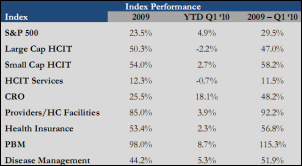

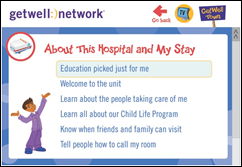
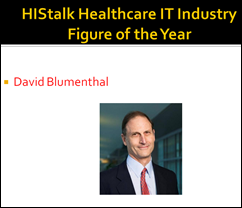




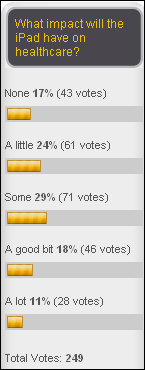





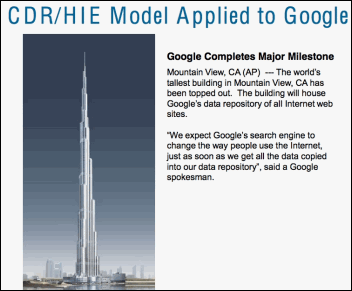





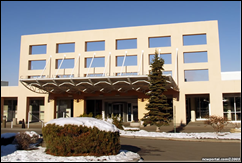


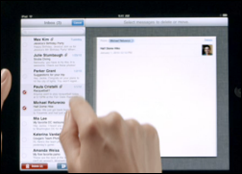

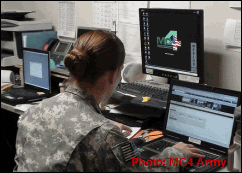




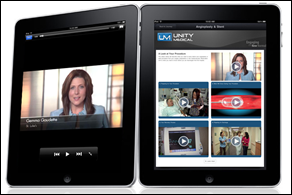




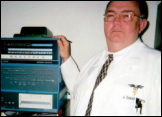
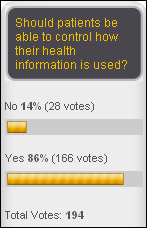

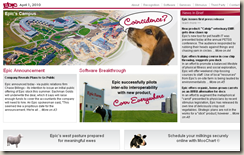
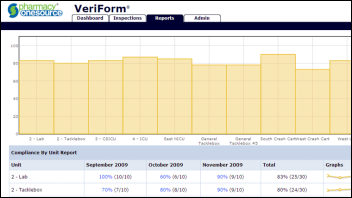



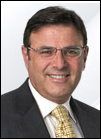



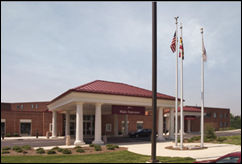








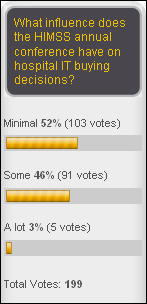


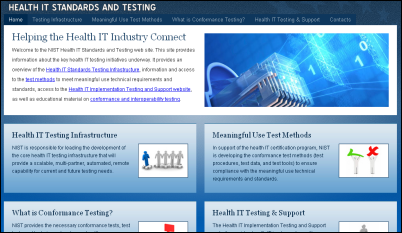





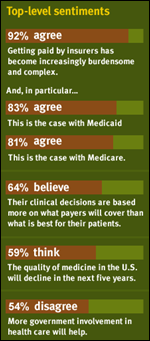


Merry Christmas and a Happy New Year to the HIStalk crowd. I wish you the joys of the season!